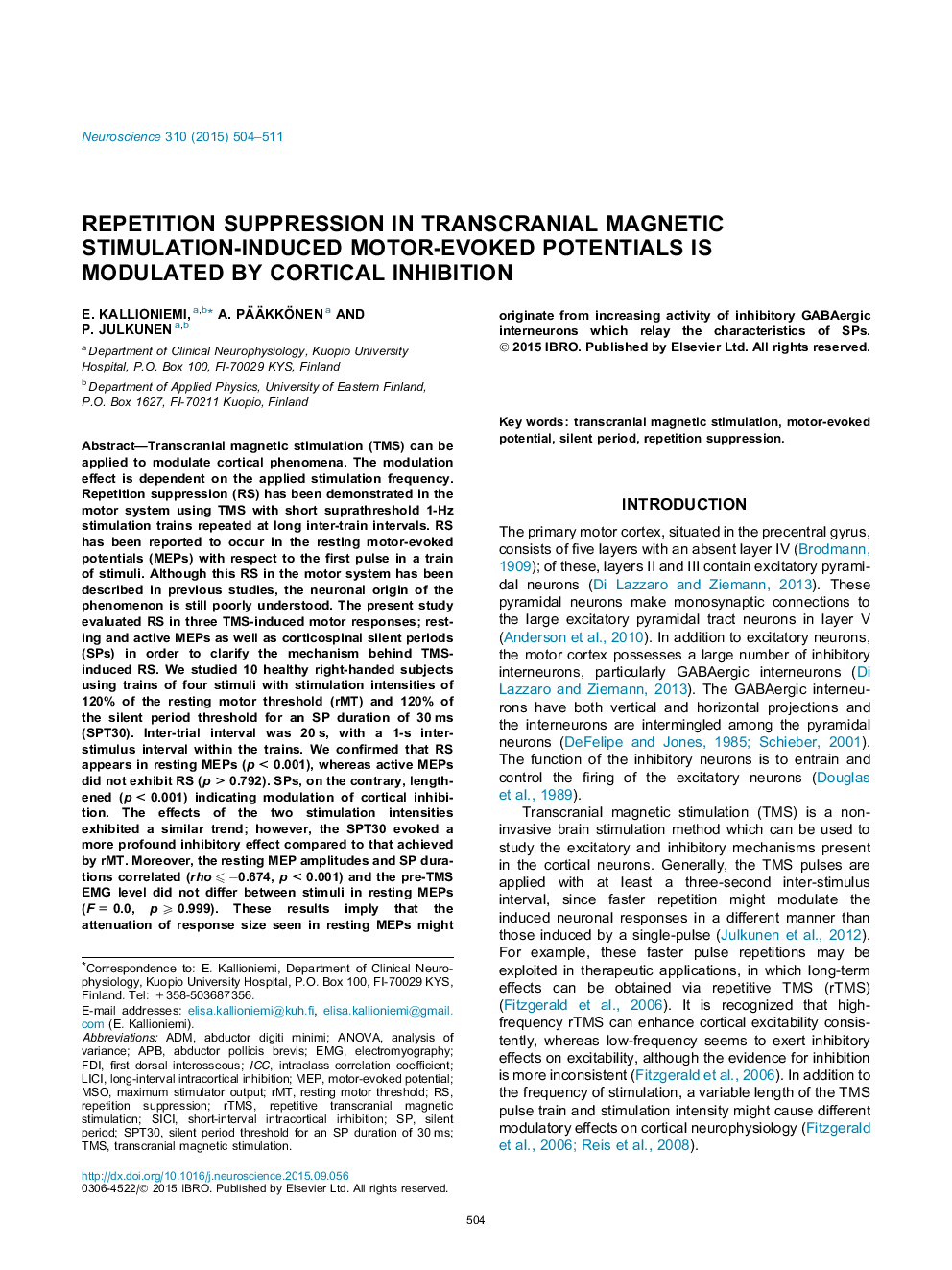| Article ID | Journal | Published Year | Pages | File Type |
|---|---|---|---|---|
| 6271551 | Neuroscience | 2015 | 8 Pages |
â¢We assessed repetition suppression in three TMS-induced responses; resting and active MEPs and corticospinal silent period.â¢Repetition suppression was confirmed in resting MEPs in accordance with earlier studies.â¢Active MEPs did not exhibit the phenomenon, SPs, on the other hand, lengthened in duration.â¢Repetition suppression might result from increased activation of GABAergic interneurons influencing on the SP duration.
Transcranial magnetic stimulation (TMS) can be applied to modulate cortical phenomena. The modulation effect is dependent on the applied stimulation frequency. Repetition suppression (RS) has been demonstrated in the motor system using TMS with short suprathreshold 1-Hz stimulation trains repeated at long inter-train intervals. RS has been reported to occur in the resting motor-evoked potentials (MEPs) with respect to the first pulse in a train of stimuli. Although this RS in the motor system has been described in previous studies, the neuronal origin of the phenomenon is still poorly understood. The present study evaluated RS in three TMS-induced motor responses; resting and active MEPs as well as corticospinal silent periods (SPs) in order to clarify the mechanism behind TMS-induced RS. We studied 10 healthy right-handed subjects using trains of four stimuli with stimulation intensities of 120% of the resting motor threshold (rMT) and 120% of the silent period threshold for an SP duration of 30 ms (SPT30). Inter-trial interval was 20 s, with a 1-s inter-stimulus interval within the trains. We confirmed that RS appears in resting MEPs (p < 0.001), whereas active MEPs did not exhibit RS (p > 0.792). SPs, on the contrary, lengthened (p < 0.001) indicating modulation of cortical inhibition. The effects of the two stimulation intensities exhibited a similar trend; however, the SPT30 evoked a more profound inhibitory effect compared to that achieved by rMT. Moreover, the resting MEP amplitudes and SP durations correlated (rho ⩽ â0.674, p < 0.001) and the pre-TMS EMG level did not differ between stimuli in resting MEPs (F = 0.0, p ⩾ 0.999). These results imply that the attenuation of response size seen in resting MEPs might originate from increasing activity of inhibitory GABAergic interneurons which relay the characteristics of SPs.
